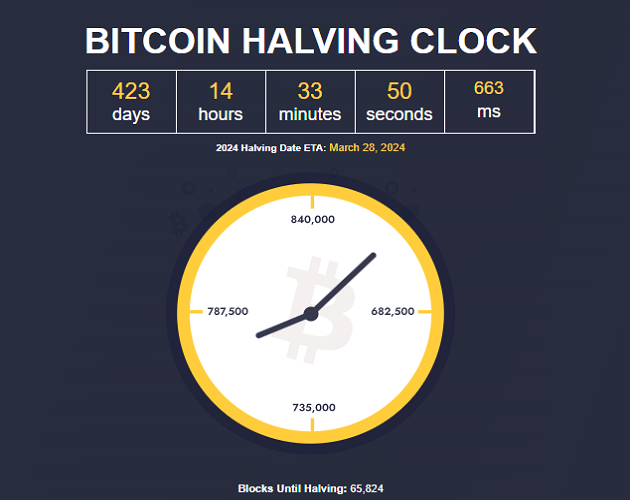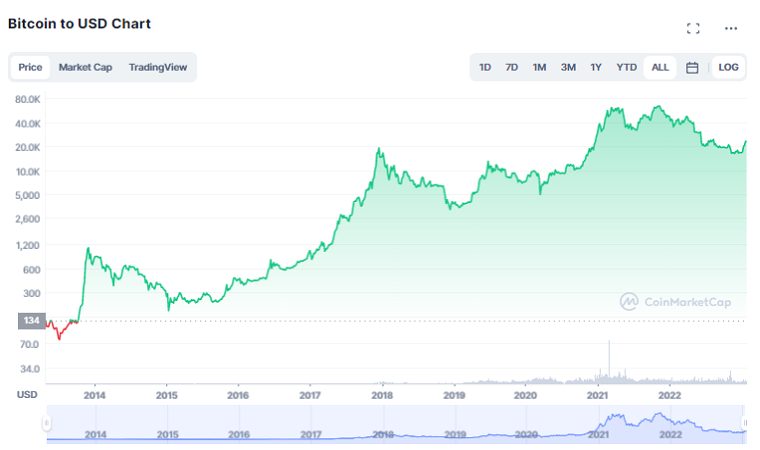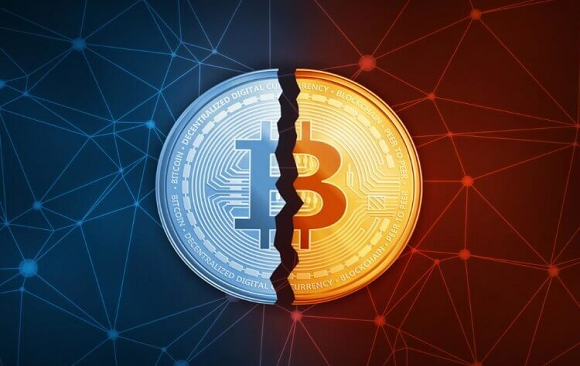Introduction
The cryptocurrency bitcoin is the most popular and largest cryptocurrency. It is powered by the underlying technology, blockchain, which records transactions securely and immutably without the need for a central authority. The blockchain that bitcoin uses (Bitcoin Blockchain) is a public and permissionless digital ledger. A peer-to-peer network, Bitcoin Blockchain has a reward system that incentivizes people to support it. This support is given when participants dedicate their computer powers to process transactions and maintain the ledger. As participants mine new bitcoins (miners), they are in turn rewarded with newly mined bitcoin.
Unlike fiat currencies such as the US Dollars, British Pound, and Euro, for example, which have infinite supplies, bitcoin supply is capped at 21 million. This cap is meant to prevent the depreciation of bitcoin due to inflation over a period of time. Through a mining and halving process, bitcoin is neither oversupplied nor supplied too quickly. Both mining and supply are not arbitrary but based on a protocol. If supply is higher than demand, bitcoin price is expected to fall. And if demand is higher than supply, bitcoin price is expected to rise. This is the law of demand and supply, all things equal. (But all things are hardly equal, are they?)
So anyone who understands the idea of demand and supply in economics should understand the central idea behind bitcoin halving. Bitcoin halving involves the process of cutting by half the rate of supply of new bitcoins and the rate of reward for people who validate transactions processed on the Bitcoin network (miners) every four years. In this article, we will introduce you to basic terms you must understand about bitcoin mining, the concept of bitcoin halving and the bitcoin halving clock, and why bitcoin halving matters to bitcoin and crypto investors.
Read also: Why is bitcoin commonly confused with blockchain?
First, understand some basic concepts.
The following concepts are fundamental to understanding how bitcoin halving works:
Block
A block refers to a collection of verified and validated transactions that are added to the blockchain. In the case of bitcoin transactions, this block is added to the Bitcoin blockchain. Each block contains a certain number of bitcoin transactions, and once a block is added to the blockchain, it cannot be altered or deleted. Each block contains a unique code called a “hash”, which is a result of hashing. Each hash which is created within the block as well as the hash of the previous block. This creates a chain of blocks, known as the blockchain, that contains all of the transaction data for the entire network. Through hashing, data or information of any length is generated and transformed into a string of fixed-size data in order to make the original data irretrievable via decryption. This is performed by a specific algorithm. The Bitcoin hash algorithm is SHA-256 or Secure Hashing Algorithm 256 bits. A hash function enables a unique digital fingerprint of a piece of data.
Mining
Mining refers to the process of using computer hardware to perform mathematical calculations in order to validate and record transactions on the Bitcoin network. Miners compete to solve complex mathematical problems. The first miner to solve the problem is rewarded with a certain number of bitcoins called block reward. The block reward is currently 12.5 bitcoins, but this is cut in half at each halving event.
As more miners join the network, the difficulty of these mathematical calculations increases, thus keeping the rate of new bitcoins being created or mined at a steady rate. This makes it more difficult for individual miners to earn bitcoins through mining, as they must compete with more miners who are also trying to solve the same mathematical problems
Transaction validation
Transaction validation is the process of verifying and confirming that a transaction on the Bitcoin network is valid before it is added to the blockchain.
Here’s how it works. When a user initiates a transaction, it is broadcast to the network. Miners then collect the transactions into a block and validate them using complex mathematical calculations. The miner who solves the problem first adds the block to the blockchain, and in return is rewarded.
The process of validation ensures that the transaction is valid and that the person initiating the transaction has the necessary funds. It also ensures that the transaction has not been tampered with, double spent or is not fraudulent. Once the transaction goes through this process it is considered confirmed and cannot be altered, ensuring the integrity and immutability of the blockchain.
Bitcoin mining also consumes a lot of energy, because bitcoin uses proof of work (PoW). PoW is a heavily energy-reliant mechanism for reaching consensus in the Bitcoin network. So mining one bitcoin is expensive, costing thousands of dollars.
Read also: What will happen after all the 21 million bitcoins have been mined?
So, what is bitcoin halving?
Bitcoin halving is an event that occurs every 210,000 blocks (approximately every four years) in which the block reward for miners is cut in half. This means that the number of new bitcoins that are created and added to the market every day is reduced by 50%.
Bitcoin uses a process called mining to add new transactions to its blockchain, which is a public ledger of all Bitcoin transactions. Miners use specialized computer equipment to validate transactions. Once validated, miners add these transactions to the blockchain in the form of blocks. As a reward for their work, miners receive newly minted bitcoins. These bitcoins are created at a fixed rate through a process called mining rewards.
Bitcoin halving is a predetermined event in which the number of new bitcoins issued every 10 minutes is cut in half. The purpose of this event is to control the rate at which new bitcoins are created and to ultimately control inflation. A very important thing to note is that the halving event is programmed in the Bitcoin protocol. It is not controlled by any individual or organization. Bitcoin halving is based on the number of mined blocks and these blocks are not fixed.
Bitcoin Halving Clock
A Bitcoin halving clock is a countdown timer that displays the time remaining until the next Bitcoin halving event. At each halving, the block reward for miners is reduced by 50%. This means that the number of new bitcoins generated per block decreases, and the total supply of bitcoins will eventually be capped at 21 million. The next halving event is expected to occur in 2024.

Bitcoin Halving Countdown
The next bitcoin halving date is an approximation as block generation time can vary and can cause slight changes in the date. The exact date of the next bitcoin halving cannot be known in advance because it is based on the number of blocks mined on the Bitcoin network. Though each block takes an average of 10 minutes to mine, the actual time it takes to mine a block can vary depending on the mining power on the network.
So, the exact date of the next halving can only be estimated based on the current block height and the block height at which the halving will occur. The block height at which the halving will occur is pre-programmed in the Bitcoin code and is set at 210,000 blocks after the previous halving.
Why does bitcoin halving matter to crypto investors?
The Bitcoin halving event matters to investors because it can have a significant impact on the price of bitcoin. As the number of new bitcoins created every 10 minutes decreases, the demand for existing bitcoins may increase, which could lead to an increase in price. Historical data show that this is valid as it has happened in the past. Following previous halvings, the price of bitcoin has seen significant increases in the months and years that followed
The table below shows the historical and future halving events and their corresponding block rewards.
| Halving Event | Block Height | Date (Approx.) | Block Rewards Before Halving | Block Rewards After Halving | All Time High After Halving |
| 1st | 210,000 | November 2012 | 50 BTC | 25 BTC | $1,242.00 |
| 2nd | 420,000 | July 2016 | 25 BTC | 12.5 BTC | $19,783.06 |
| 3rd | 630,000 | May 2020 | 12.5 BTC | 6.25 BTC | $69,044.77 |
| 4th | 840,000 | 2024 (est.) | 6.25 BTC | 3.125 BTC | In view |
Before the 1st bitcoin halving, the first block or ‘Genesis Block’—as it is called—had a block height of 1 with a block reward of 50. This was created 9 January 2009.
- The 1st Halving took place 28 November 2012 at block #210,000. The block reward before halving was 50 BTC, and it was reduced to 25 BTC after the halving.
- The 2nd Halving took place 9 July 2016 at block #420,000. The block reward before halving was 25 BTC. This was reduced to 12.5 BTC after the halving.
- The 3rd Halving took place 11 May 2020 at block #630,000. The block reward before halving was 12.5 BTC. It was reduced to 6.25 BTC after the halving.
- The 4th Halving is expected to take place in 2024 at block #840,000. The block reward before halving is estimated to be 6.25 BTC. It is expected that this will be reduced to 3.125 BTC after the halving.

Read also: What is bitcoin?
Bitcoin price after each bitcoin halving
Let’s take a quick look at bitcoin price after the previous bitcoin halving events. So far, bitcoin has had three halvings, and the price at each halving was significantly higher than at the previous halving.
- The first bitcoin halving occurred 28 November 2012, and bitcoin price rose from around $10 to over $1,000 by the end of 2013.
- The second bitcoin halving occurred 9 July 2016, and bitcoin price rose from around $600 to almost $20,000 by the end of 2017.
- The third bitcoin halving occurred 11 May 2020, and price rose from around $8,000 to over $69,000 in November 2021. With bitcoin price at about $23,000 at the time of writing, what will bitcoin price be after the bitcoin halving in 2024?


For the upcoming bitcoin halving in 2024, bitcoin holders will certainly be hoping that the rising trend continues. Bitcoin is considered as a bellwether for the broader cryptocurrency market, therefore its price movements are generally seen as an indicator of the overall market sentiment and direction. When bitcoin price rises, it can signal to investors and traders that the overall market is bullish, and this can lead to increased buying activity in other cryptocurrencies, and vice versa.
From a historical perspective, bitcoin price has seen an increase after each halving event, as the decrease in new bitcoins being created can lead to an increase in demand for existing bitcoins. Therefore, it is a significant event for bitcoin investment.
Closing
It is important to understand that past performance of any asset is not indicative of future results with any certainty. Bitcoin is no exception. The bitcoin market—and the crypto market generally—can be highly unpredictable.
Investors should always do their own research. The crypto market can be influenced by various other factors, including regulatory actions, global economic conditions, and investor sentiments. So the bitcoin-halving event alone doesn’t guarantee an increase in bitcoin price.
While it’s not always predictable how bitcoin price and the crypto market generally will react to bitcoin-halving events, it’s important that as an investor or hodler you keep an eye on this and be aware of its potential effects on the market.
Credit: Victor Solomon is a Technical Analyst who is also knowledgeable about various aspects of blockchain and cryptocurrency.
Discover more from Crypto Asset Buyer
Subscribe to get the latest posts sent to your email.



